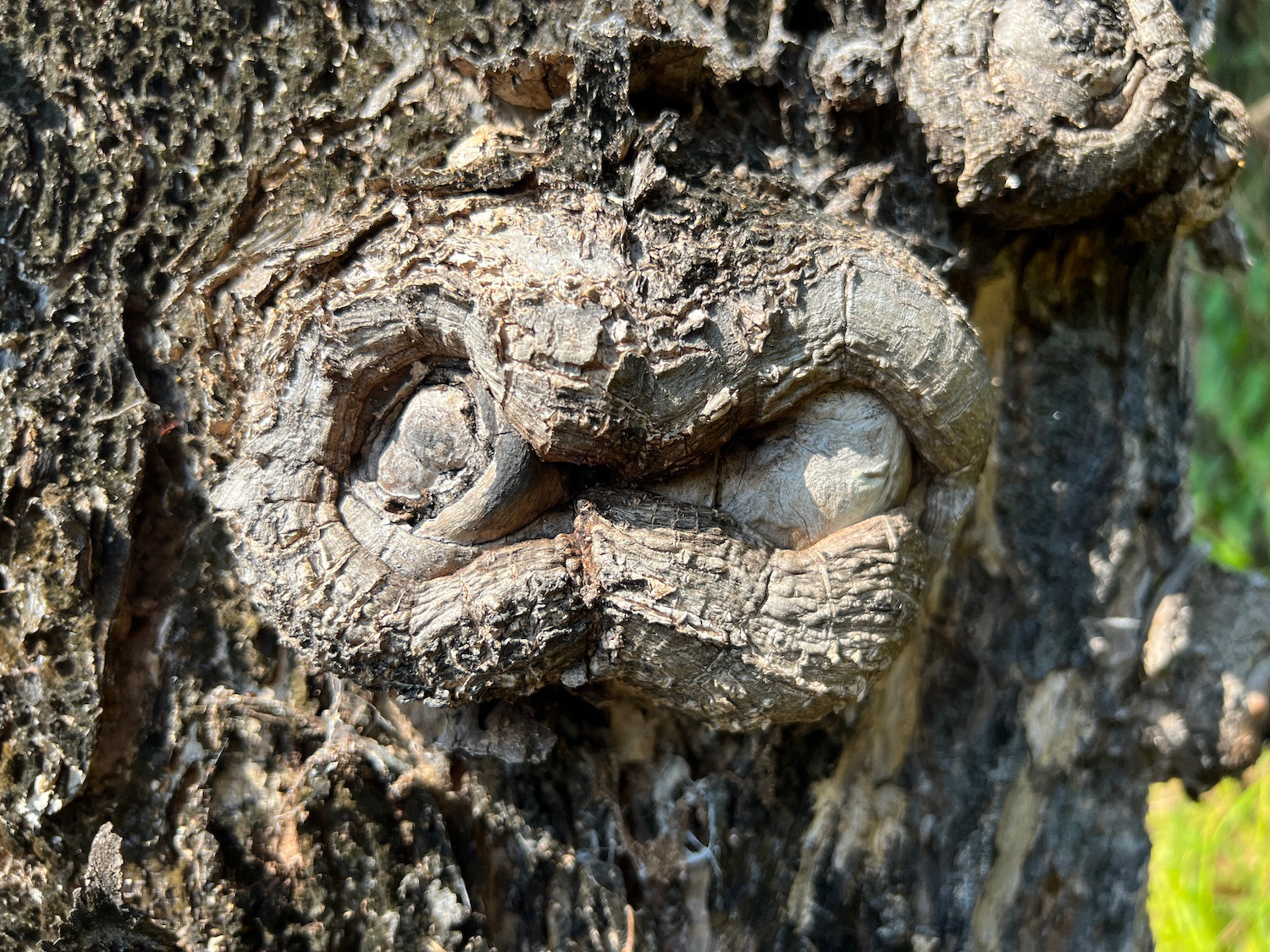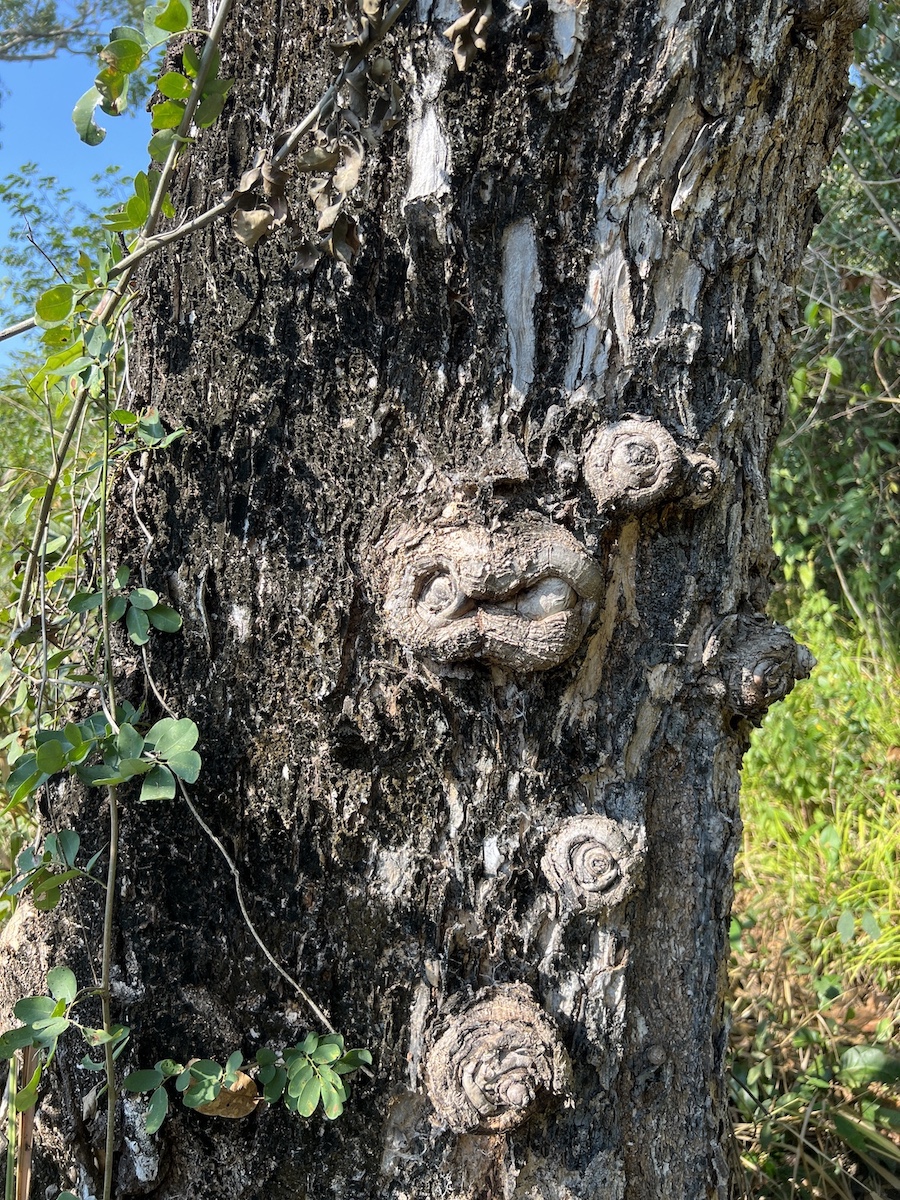Posted April 26, 2022
I saw this “owl face” while hiking along a dirt trail through the seasonally inundated bajos that surround the tasistal savannas we are searching for. Fortunately seasonally inundated also means seasonally bone dry, so hiking these many kilometers was realistic in late March this year. FLAAR has a 5-year project of cooperation and coordination with CONAP to study flora, fauna and ecosystems of the entire Reserva de la Biosfera Maya. We are focusing on studying all the varieties of savanna: low grass savanna, high sawgrass savanna (cibal), and tasiste palm savannas (tasistal). Also are making lists of all of the wild plants in these habitats that are edible (which means the Classic Maya had these plants available as food thousands of years ago).
Is this a buho or lechuza or tecolote? Those are the words in Spanish to distinguish between kinds of owls. Tecolote is derived from Nahuatl, the language of the Aztecs. Lots of towns including in Guatemala are named Teculutan (which I assume means place of the tecolotes). I drive through the town of Teculutan (Zacapa, along CA-9) a dozen times each year to reach where we are doing field trip research to find interesting flora and fauna. (ps, the shape of the area around the eyes is more like that of a buho than a lechuza).
Next step is to learn what causes these tumor-like growths to form on this particular tree. I usually see galls on trees in the Maya Highlands. On this trail we are in the Maya Lowlands. Hope this “owl face” was entertaining for you.
Written by Nicholas Hellmuth

























